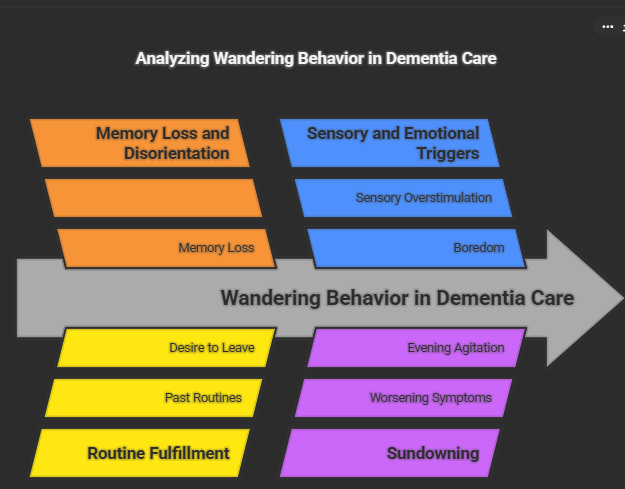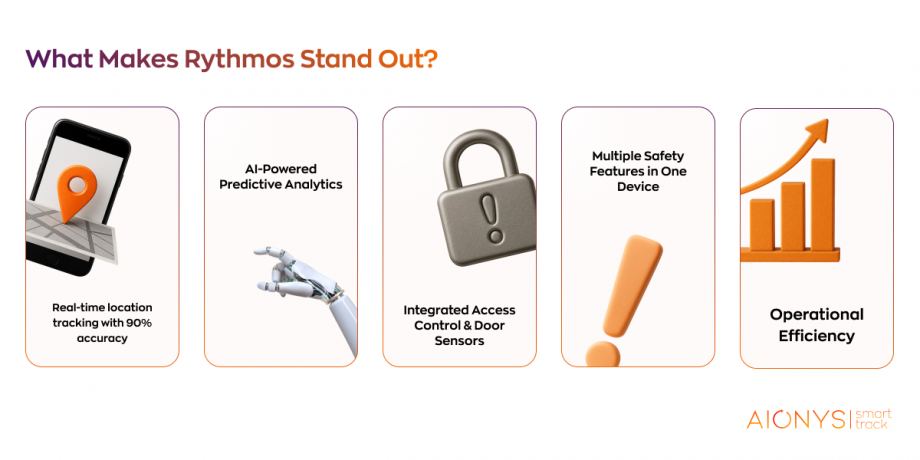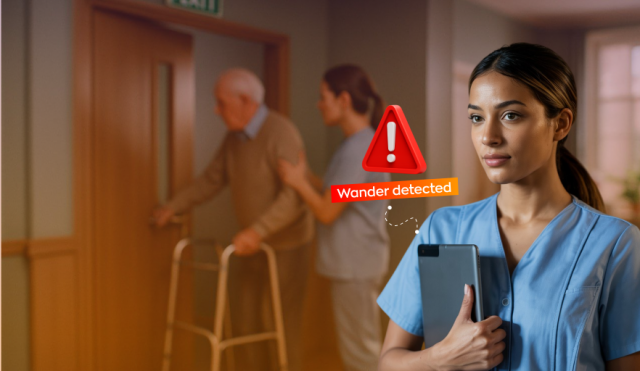Wander management represents one of the most critical safety challenges facing senior care facilities today. It demands more than staff vigilance it requires sophisticated, integrated solutions that protect vulnerable residents while preserving their autonomy and dignity.
With the rise in cognitive impairments such as Alzheimer's and dementia, the need for an intelligent, scalable wander management system has shifted from optional to essential. These systems now serve as the technological backbone of proactive care strategies in memory care and assisted living facilities.
The Growing Challenge of Wandering in Senior Living

Wandering is not just an occasional event it is a persistent and widespread concern for facilities caring for individuals with dementia or Alzheimer's. According to studies, over 60% of those diagnosed with dementia will exhibit wandering behavior at some point. This behavior may include pacing, lapping, or attempting to leave the premises.
In residential care settings, this becomes a multifaceted issue. Residents often wander due to memory loss, disorientation, or the desire to fulfill past routines like going to work or visiting family. Other triggers include sensory overstimulation, discomfort, boredom, or simply confusion about their surroundings. Sundowning, a phenomenon where symptoms worsen during late afternoons or evenings, often exacerbates the risk.
The statistics are alarming: Between 1-2% of seniors in care facilities elope each year, and tragically, many incidents result in serious injury or death. Roughly 40% of those not found within 24 hours are at risk of severe harm. Facilities that experience an elopement often face regulatory citations, lawsuits, reputational damage, and loss of community trust.
Understanding the True Cost of Elopement
Elopement isn’t just a clinical concern it’s a legal, financial, and operational crisis. When a resident leaves a secure area unnoticed, the aftermath often includes:
- Legal liability: Regulatory penalties, lawsuits, and increased insurance premiums.
- Reputational damage: Loss of trust among families and communities, resulting in reduced occupancy.
- Operational strain: Emergency response, temporary lockdowns, and emotional toll on staff.
- Financial cost: Settlements can range from €250,000 to over €1 million per incident. Some jury awards have exceeded €5 million.
Additionally, facilities may lose more than 20% of their residents after a single high-profile incident. These are not isolated events they represent systemic vulnerabilities that must be addressed with urgency and innovation.
Introducing Rythmos: The Integrated Wander Management Platform

Rythmos Wander Management is an AI-powered platform purpose-built to mitigate elopement risks in senior care. Designed for simplicity, scalability, and accuracy, Rythmos combines real-time tracking, behavioral analytics, access control, and mobile alerting in one seamless solution.
Key Differentiators:
- Real-time GPS tracking with 90%+ location accuracy.
- Predictive AI analytics to detect risk before it becomes action.
- Integrated door sensors and locks that respond instantly to resident movement.
- Multiple safety functions in one device: fall detection, nurse call button, and Alexa-enabled communication.
- EMR integration for context-rich decision-making.
Facilities using Rythmos report a 95% reduction in elopement incidents and a 30% drop in staff workload through automation and streamlined workflows.
Dementia wander prevention: Beyond Physical Barriers
True dementia wander prevention begins with data and ends with action. Rythmos continuously monitors resident patterns and identifies anomalies that may suggest an increased risk of wandering. Through machine learning, it builds behavioral profiles and adjusts alert thresholds dynamically based on each resident’s cognitive and mobility status.
This goes far beyond traditional door alarms or surveillance. With Rythmos, care teams gain proactive control not just reactive response.
Geofencing and Zone-Based Safety
At the heart of the Rythmos platform is advanced geofencing capability. Facilities can define virtual zones across the property—indoors or outdoors—and assign custom rules to each:
- Safe zones allow movement without alerts.
- Monitored zones send non-emergency notifications.
- Restricted zones trigger real-time staff alerts or lockdown protocols.
These dynamic perimeters allow residents to retain freedom of movement while staying within safe, supervised areas. For instance, a resident may be free to walk the garden in the morning but restricted during sundowning hours based on historical risk data.
Adaptive Risk Profiling
Rythmos enables fully personalized risk profiles for each resident. Risk can be calculated based on factors like diagnosis, past incidents, medication changes, or even patterns of restlessness. This data is used to assign tiered intervention strategies:
- Low risk: Passive alerts, monitoring only.
- Medium risk: Mobile notifications and visual monitoring.
- High risk: Locked access, GPS activation, and priority staff notification.
Customizing responses not only enhances safety but also supports a more respectful, less restrictive care environment.
Implementation and Facility Integration
One of the most powerful aspects of Rythmos is its low-friction deployment. The system requires minimal infrastructure changes:
- Wireless sensors and door locks install with no drilling or rewiring.
- Mobile apps and dashboards are accessible on tablets, phones, or smart TVs.
- Staff training takes hours, not days, thanks to an intuitive user interface.
Implementation often begins with high-risk zones such as memory care units, then expands facility-wide. Rythmos is designed to scale with the needs of any community from boutique assisted living to regional care networks.
Real Results from Real Communities
Facilities across Europe and North America have implemented Rythmos with measurable outcomes:
- Spurgeon Assisted Living: Reduced elopement events to zero within 90 days.
- Teal Shores Memory Care: Reported 40% faster staff response times after integrating Rythmos.
- Test Shores Senior Living: Achieved full coverage without disrupting operations or retrofitting infrastructure.
In every case, staff reported higher confidence in safety protocols and families reported increased trust in the care provided.
Financial and Operational ROI
The business case for Rythmos is as strong as the clinical one:
- Reduced liability risk: Preventing even one incident avoids potential million-euro settlements.
- Increased occupancy: Families are more likely to choose secure, tech-forward facilities.
- Operational savings: Staff efficiency improves through reduced manual monitoring and faster communication.
Many facilities report full ROI within the first 12 months through a combination of cost avoidance and increased revenue.
Future-Proofing Senior Care
Wander management isn’t just about stopping residents from leaving it’s about giving them the confidence to move safely within their environment. It’s about enabling staff to work smarter, not harder. And it’s about providing families with peace of mind.
With Rythmos, your facility can deliver:
- Safety without surveillance.
- Autonomy without anxiety.
- Innovation without complexity.
This is the new standard in resident protection a compassionate, technology-driven approach that elevates every aspect of care.






